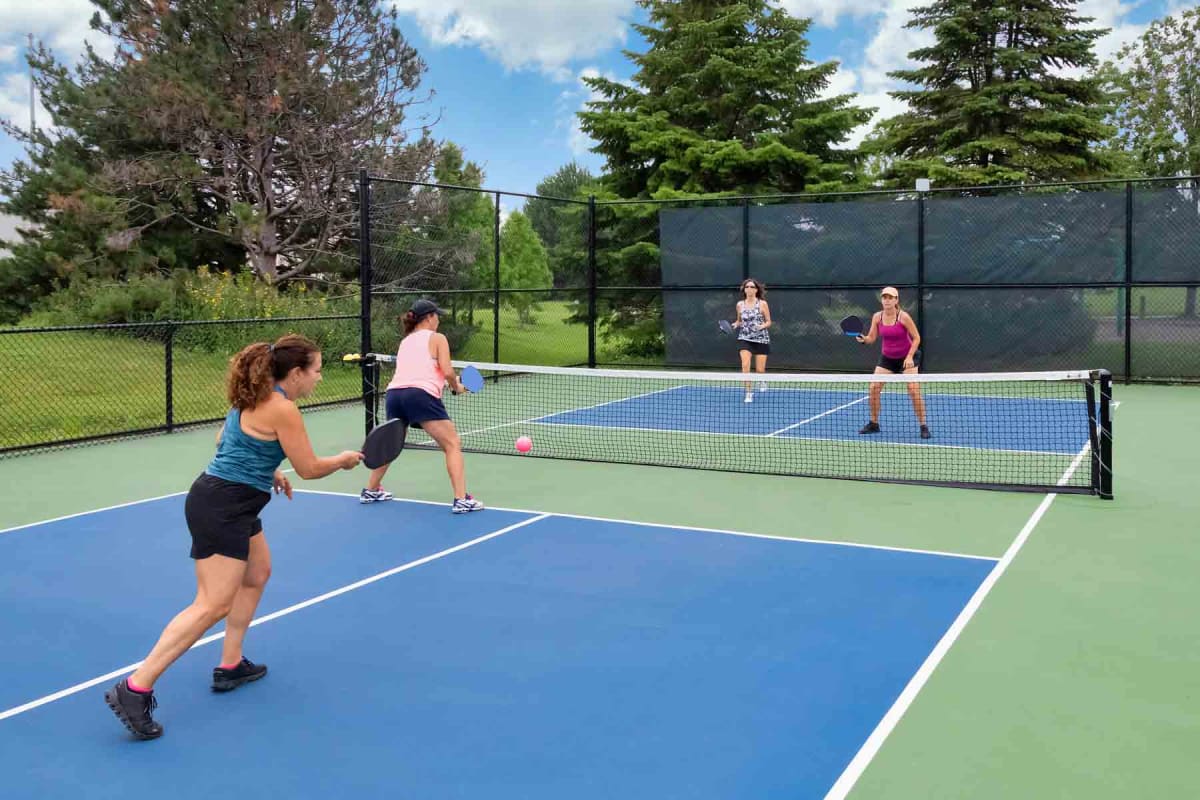Lasting Practices in Pickleball Court Construction You Must Know
As the popularity of pickleball proceeds to climb, so also does the demand for sustainable techniques in court construction. This technique not just addresses environmental issues yet also boosts the longevity and capability of the courts. From choosing environment-friendly products to executing effective water drainage and energy-saving illumination services, there are countless techniques to consider. Yet, the influence of these practices prolongs much beyond the court itself. Comprehending how each component adds to a more lasting future welcomes additionally exploration into the detailed balance between leisure development and environmental stewardship.
Picking Eco-Friendly Materials
Choosing environment-friendly products is an important action in the building and construction of sustainable pickleball courts. The option of sustainable materials not only lessens ecological influence yet likewise enhances the long life and performance of the court. Secret materials consist of recycled rubber for the surface area, which provides outstanding durability and shock absorption while diverting waste from land fills.
In addition, making use of in your area sourced products lowers transport discharges and sustains regional economic situations. Pickleball court construction. As an example, using indigenous woods for secure fencing and seats can supply a sustainable visual while guaranteeing resilience versus the elements.
Including absorptive products for court foundations can further add to sustainability by permitting for natural water drain and minimizing drainage. These selections not just safeguard neighborhood communities yet also advertise much healthier play settings.
Efficient Drainage Solutions
While the selection of environment-friendly products is crucial, carrying out reliable drainage services is similarly essential for preserving lasting pickleball courts. Correct water drainage not just secures the court surface from water damage however additionally decreases erosion and drainage, promoting ecological integrity.
Effective drainage systems can consist of absorptive paving, which permits water to penetrate the ground as opposed to merging on the surface area. This minimizes the chance of standing water, which can cause mold and various other upkeep problems. Additionally, incorporating strategically put water drainage networks and swales can direct excess water far from the court area, guaranteeing a completely dry having fun surface area and stopping soil erosion.
Utilizing indigenous plants in the landscaping around the courts can further improve drainage by soaking up excess water and reducing runoff. These plants call for less irrigation and advertise biodiversity, aligning with lasting techniques.
Moreover, it is vital to routinely keep the drain system to ensure its long-term effectiveness. This consists of cleaning particles and tracking for obstructions. By focusing on efficient water drainage options, pickleball court contractors can significantly add to the sustainability and durability of the facility, inevitably benefiting both gamers and the environment.
Energy-Efficient Illumination Options
As the need for pickleball remains to grow, incorporating energy-efficient illumination options right into court layout has actually become progressively crucial for sustainability. Traditional illumination systems often eat extreme power, contributing to higher operational expenses and environmental effect. Taking on modern-day, energy-efficient innovations is vital for both brand-new buildings and restorations.
LED (Light Emitting Diode) lights stands out as a premier selection as a result of its long life and energy savings (Pickleball court construction). Contrasted to standard lights, LEDs utilize around 75% less energy and can last up to 25 times much longer, substantially minimizing upkeep expenses. The directional nature of LED illumination minimizes light contamination, guaranteeing that lighting is focused on the court rather than bordering areas.

Sustainable Surface Area Alternatives
Exploring lasting surface choices for pickleball courts has gotten traction among gamers and contractors alike. The focus on eco-friendly materials not just straightens with the growing ecological awareness however additionally enhances the performance and toughness of the courts.
This product offers excellent shock absorption, reducing the threat of injuries for players while advertising sustainability. These ceramic tiles are easy to change and install, and blog here their convenience enables for numerous court setups.
Natural yard courts are also becoming a lasting choice, promoting biodiversity and minimizing the warm island result. They require regular maintenance and water, which may not line up with all sustainability objectives.

Water Preservation Methods

Another reliable method involves the installation of rain harvesting systems. These systems store and accumulate rain for use in keeping court surfaces and landscaping. This strategy not only saves potable water yet likewise reduces dependence on community resources.
Furthermore, using drought-resistant landscape design around the courts is crucial. Native plants call for less water and are much better adapted to neighborhood climate conditions, thus lowering overall water intake. Additionally, using reliable irrigation systems, such as drip watering, makes certain that water is delivered straight to plant roots, lessening dissipation and waste.
Conclusion
Including lasting methods in pickleball court construction dramatically contributes to ecological preservation and source efficiency. By focusing on these practices, the construction of pickleball courts can line up with broader environmental objectives while promoting internet durability and functionality within neighborhoods.
As the appeal of pickleball continues to rise, so as well does the need for sustainable methods in court construction.Choosing green materials is a critical step in the construction of sustainable pickleball courts. By prioritizing energy-efficient lights options, pickleball court fitters can add to an extra sustainable future while meeting the requirements of stakeholders and gamers alike.Including sustainable surface alternatives not only enhances the performance of pickleball courts but also leads the method for implementing reliable water preservation strategies.Integrating sustainable methods in pickleball court building substantially contributes to environmental conservation and resource efficiency.